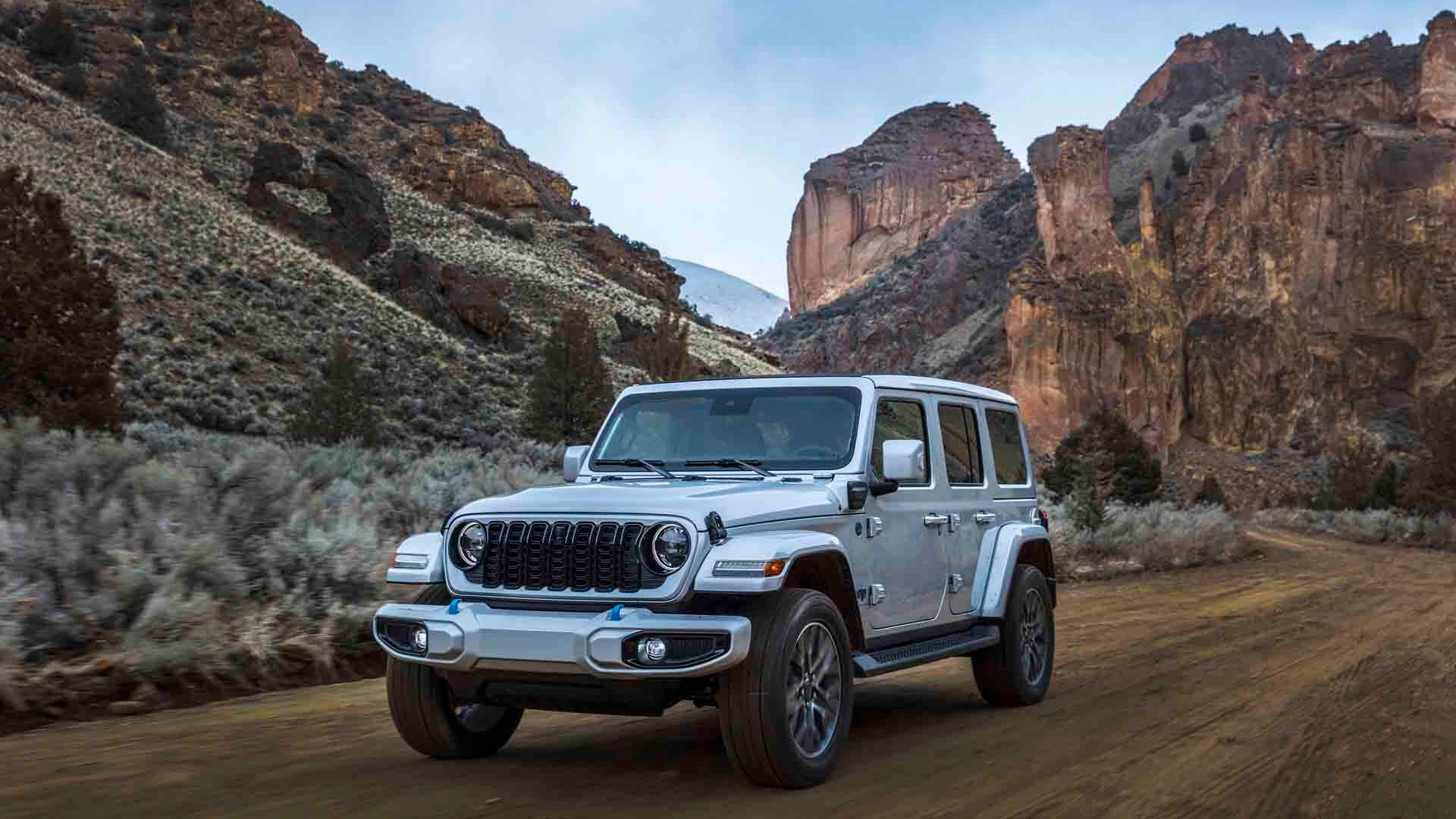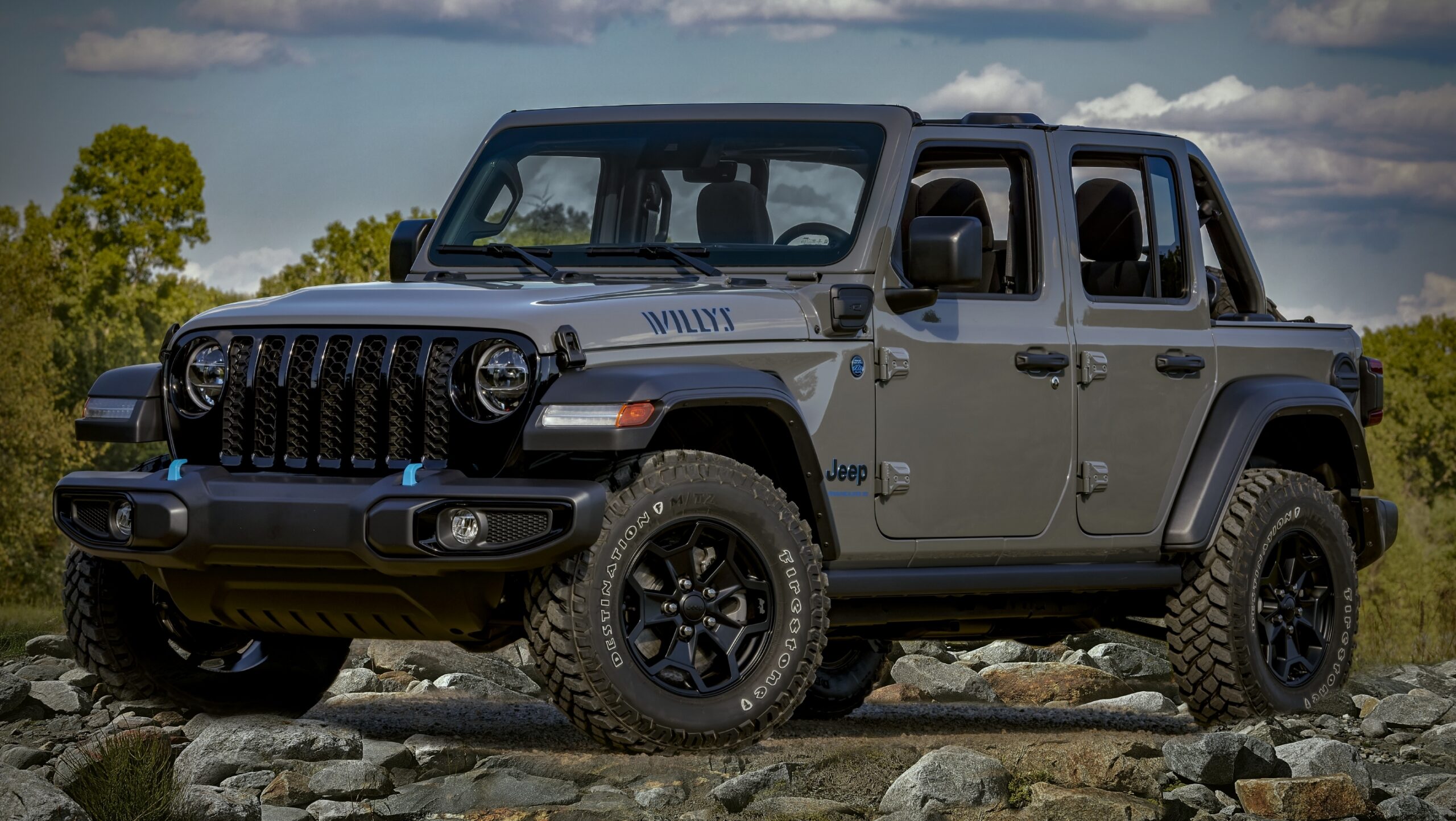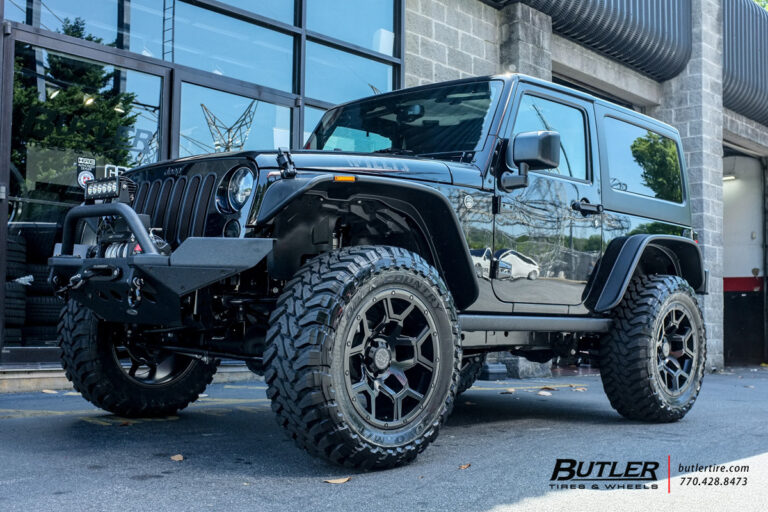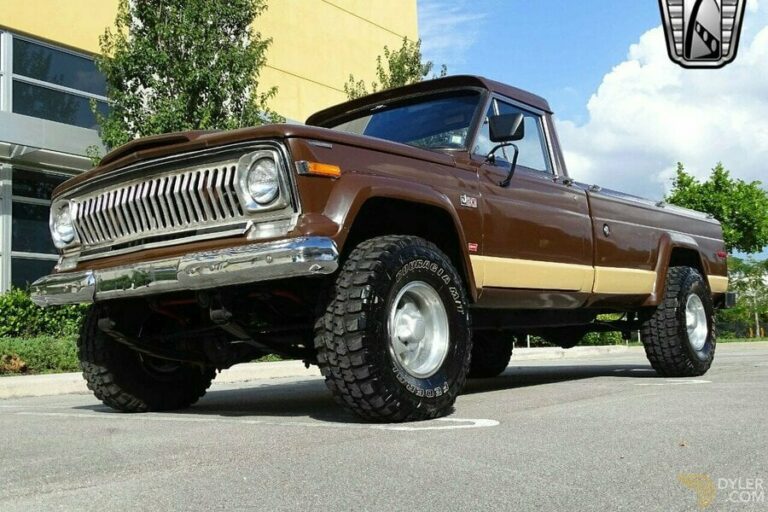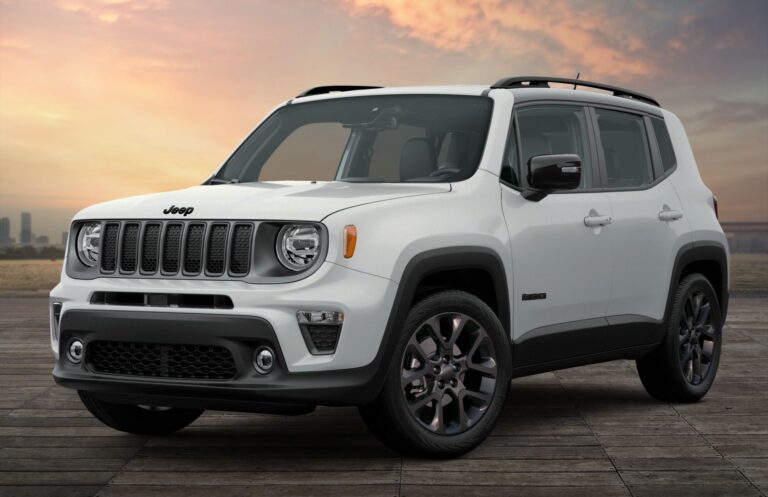The Unbridled Beast: Unleashing the Power of the Jeep SRT 800 HP
The Unbridled Beast: Unleashing the Power of the Jeep SRT 800 HP jeeps.truckstrend.com
In the realm of high-performance SUVs, few names command as much respect and awe as the Jeep Grand Cherokee SRT and its supercharged sibling, the Trackhawk. Yet, for a select group of enthusiasts, even the formidable factory output isn’t enough. They crave more – an untamed beast that redefines the limits of what an SUV can be. This desire gives birth to the legend of the "Jeep SRT 800 HP" – a moniker that doesn’t denote a factory model, but rather a testament to aftermarket engineering, raw power, and an unyielding pursuit of speed.
The Jeep SRT 800 HP represents the pinnacle of performance modification for these iconic vehicles. It’s a machine meticulously tuned, upgraded, and unleashed to deliver a mind-bending 800 horsepower (or more) to all four wheels, transforming a practical family hauler into a supercar slayer. This article will delve deep into what makes these vehicles tick, how such immense power is achieved, the exhilarating benefits, the critical considerations, and everything an aspiring owner needs to know about entering this elite world of high-horsepower SUVs.
The Unbridled Beast: Unleashing the Power of the Jeep SRT 800 HP
The Genesis of a Monster: What is the Jeep SRT 800 HP?
At its core, the "Jeep SRT 800 HP" is a heavily modified version of either the Jeep Grand Cherokee SRT (powered by the 6.4-liter naturally aspirated HEMI V8, typically producing 475 horsepower) or, more commonly, the Jeep Grand Cherokee Trackhawk (which houses the ferocious 6.2-liter supercharged Hellcat HEMI V8, boasting a factory 707 horsepower). The crucial distinction is that 800 horsepower is not a number that rolls off the production line. It is a figure achieved through extensive aftermarket enhancements, pushing the boundaries of the vehicle’s powertrain and chassis.
While it is technically possible to reach 800 horsepower with a highly modified 6.4L SRT (usually involving adding forced induction like a supercharger or turbocharger, plus forged engine internals), the Trackhawk provides a far more accessible and cost-effective foundation for this power level. Its factory-supercharged Hellcat engine is already designed to handle significant power and respond incredibly well to performance upgrades. Thus, when people refer to an "800 HP Jeep SRT," they are almost exclusively talking about a tuned Trackhawk.
The Engineering Behind the Brute Force: How 800 HP is Achieved
Reaching the 800 horsepower mark (and often beyond) requires a strategic combination of hardware upgrades and sophisticated software calibration. The specific modifications vary slightly depending on whether the base vehicle is an SRT or a Trackhawk, but the goal remains the same: to dramatically increase the engine’s ability to produce power and handle the resulting stress.
For the Jeep Grand Cherokee Trackhawk (the most common path to 800+ HP):
- Supercharger Pulley Upgrade: This is often the first and most impactful modification. A smaller upper pulley (or a larger lower crank pulley) increases the supercharger’s rotational speed, forcing more air (boost) into the engine.
- Upgraded Fuel System: More air requires more fuel. This typically involves installing larger fuel injectors and upgrading the fuel pumps to ensure adequate fuel delivery under high boost conditions. Ethanol-based fuels like E85 are often used at this stage for their higher octane and cooling properties.
- Long-Tube Headers and Full Exhaust System: Reducing backpressure and improving exhaust flow allows the engine to breathe more freely. Long-tube headers are particularly effective at scavenging exhaust gases, leading to significant power gains.
- Cold Air Intake (CAI): A high-flow air intake system provides the supercharger with a denser, cooler air supply, further enhancing performance.
- Custom ECU Tuning: This is the most critical step. A skilled tuner will recalibrate the engine’s control unit (ECU) to optimize fuel delivery, ignition timing, boost pressure, and transmission shift points for the new hardware. This ensures the engine operates safely and efficiently at higher power levels.
- Upgraded Spark Plugs: Colder spark plugs are often necessary to prevent pre-ignition (knock) under increased cylinder pressures.
- Intercooler Upgrades: While the Trackhawk has a capable intercooler, pushing beyond 800 HP often benefits from enhanced intercooling to keep intake air temperatures down.
![]()

For the Jeep Grand Cherokee SRT (more challenging and expensive to reach 800 HP):
To reach 800 HP with a naturally aspirated 6.4L SRT, forced induction is a must. This typically involves:
- Aftermarket Supercharger or Turbocharger Kit: This is the primary investment, adding significant complexity and cost.
- Forged Engine Internals: The stock 6.4L HEMI is not designed for forced induction at 800 HP. Forged pistons, connecting rods, and potentially a new crankshaft are often required to prevent catastrophic engine failure.
- Comprehensive Fuel System Upgrade: Similar to the Trackhawk, but often more extensive to support the massive increase in power.
- Custom ECU Tuning: Absolutely essential to integrate the forced induction system and ensure engine longevity.
- Cooling System Enhancements: More power generates more heat, necessitating upgraded radiators, oil coolers, and intercoolers.
Supporting Modifications: Regardless of the base, higher horsepower puts immense strain on other drivetrain components. While the Trackhawk’s transmission (ZF 8HP90) is robust, for sustained hard use, transmission upgrades (e.g., upgraded clutches, valve body) are often recommended. Stronger driveshafts and axles may also be considered to prevent breakage during hard launches.
The Thrill and the Trade-offs: Benefits and Considerations
Owning and driving an 800 HP Jeep SRT/Trackhawk is an experience unlike any other, but it comes with a distinct set of benefits and important considerations.
Benefits:
- Unparalleled Acceleration: These vehicles can out-accelerate many dedicated sports cars and supercars, offering shocking straight-line performance from a family SUV.
- Unique Driving Experience: The blend of SUV practicality with extreme power creates a thrilling and somewhat surreal driving sensation.
- Dominant Presence: The sound of a supercharged HEMI with an aftermarket exhaust, combined with its imposing stance, ensures heads turn everywhere you go.
- Versatility: Despite its immense power, it retains the utility of an SUV, offering space, comfort, and all-wheel drive capability.
Considerations and Challenges:
- Significant Cost: Beyond the purchase price of the vehicle, the modifications themselves represent a substantial investment.
- Reduced Reliability: Pushing an engine far beyond its factory specifications inherently increases wear and tear. Components are under more stress, leading to a higher likelihood of premature failure if not properly maintained or tuned.
- Diligent Maintenance: An 800 HP Jeep demands more frequent and specialized maintenance, including more frequent oil changes, attention to powertrain fluids, and regular inspections by knowledgeable technicians.
- Driveability Changes: While many well-tuned 800 HP Jeeps remain surprisingly streetable, they can be louder, consume significantly more fuel, and potentially feel less refined than stock.
- Warranty Void: Any significant aftermarket modification will almost certainly void your factory powertrain warranty.
- Legality and Emissions: Modified exhaust systems may not comply with local noise regulations, and altered engine tuning can impact emissions compliance, potentially causing issues during inspections.
- Increased Insurance Premiums: Insurers may charge higher rates for a highly modified, high-performance vehicle.
Navigating the Aftermarket: Choosing a Tuner and Parts
Embarking on the journey to 800 HP requires careful planning and the right partners.
- Reputable Tuners are Paramount: The quality of the ECU tune is perhaps the most critical factor for both performance and reliability. Research tuners with extensive experience specifically with Hellcat/HEMI platforms. Look for shops with a proven track record, positive customer reviews, and in-house dyno testing capabilities. A poor tune can lead to engine damage.
- Quality Parts Matter: While there might be cheaper alternatives, investing in high-quality, proven aftermarket components from reputable brands (e.g., Magnuson, Whipple, Fore Innovations, Kooks, DiabloSport, HP Tuners) will contribute to better performance and longevity.
- Understanding "Stages": Many tuners offer "stages" of performance upgrades (e.g., Stage 1, Stage 2, Stage 3). These often correspond to specific combinations of parts and expected power levels. Understand what each stage entails and what supporting modifications are necessary.
- Custom vs. Off-the-Shelf: While some tuners offer pre-packaged kits, a custom dyno tune tailored to your specific vehicle and modifications will always yield the best results.
Owning an 800 HP Beast: Practical Advice and Maintenance
Owning a highly modified, high-horsepower vehicle is a commitment. Here’s practical advice for living with an 800 HP Jeep:
- Adhere to an Aggressive Maintenance Schedule: Change engine oil more frequently than factory recommendations (e.g., every 3,000-5,000 miles) using high-quality synthetic oil. Monitor all fluid levels (coolant, transmission fluid, differential fluid).
- Monitor Vital Signs: Consider installing aftermarket gauges or using an OBD-II scanner to monitor critical engine parameters like oil pressure, air-fuel ratio (AFR), and boost pressure.
- Cooling is Key: Ensure the cooling system is always in top condition. Overheating is a major cause of engine failure in high-horsepower applications.
- Tire Management: 800 HP will shred tires quickly, especially if you enjoy hard launches. Invest in high-performance tires designed for the power, and be prepared for frequent replacements.
- Brake Upgrades: While SRT/Trackhawks have excellent factory brakes, increased speed warrants ensuring your braking system is up to the task, especially if you plan on track days. Consider upgraded pads, rotors, or even a full big brake kit.
- Drive Responsibly: With great power comes great responsibility. Be mindful of speed limits, road conditions, and the safety of others. This is not a vehicle for reckless driving.
- Find a Specialist Mechanic: Don’t take your highly modified Jeep to just any shop. Find a mechanic or performance shop that specializes in high-performance HEMI engines and has experience with forced induction.
Price Table: The Cost of Unleashing 800 HP in a Jeep SRT/Trackhawk
It’s crucial to understand that an "800 HP Jeep SRT" is not a single model you can buy off a dealership lot. Its price is a composite of the base vehicle’s cost and the extensive modifications required. The figures below are estimated ranges and can vary significantly based on vehicle condition, mileage, specific parts chosen, labor rates, and geographical location.
| Component | Description
